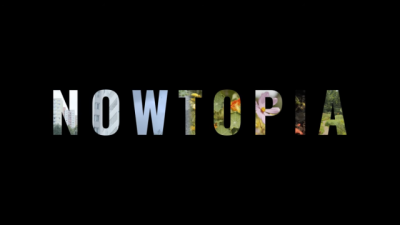Nowtopia:The Film

The recently released documentary Nowtopia explores a range of themes relevant to community economies.
Written and directed by Community Economies Research Network member Tom Smith, Nowtopia was filmed in Brno, the Czech Republic’s second largest city, and was inspired by the community economies approach of J.K. Gibson-Graham and the economic utopianism of the Degrowth movement.
Smith says that he wanted to address questions of “How can we challenge the idea that there is no possible alternative to capitalism? How do move beyond moral outrage at current inequities and environmental destruction towards transformative practices?”
The film takes its title from Chris Carlsson’s 2008 book, Nowtopia: How Pirate Programmers, Outlaw Bicyclists, and Vacant-Lot Gardeners are Inventing the Future Today!, and it includes a short interview with Carlsson.
Carlsson is interested in practices of cooperation and solidarity as the basis for a more connected world, and he sees this world all around in the ways people are already using their time and skills to address real issues and to make the world a better place.
For Carlsson, these are the spaces of nowtopia and they represent a recomposition of the ‘working’ class and a revolution based on work as one of the fulcrums on which worlds and lives can be reshaped.
The film explores three nowtopian spaces in Brno, Otevřená zahrada (Open Garden), Bike Kitchen Brno, and Industra.
Through Industra we see how community members mobilised to address issues that arose during the COVID-19 crisis. Using the centre’s community workshop space, which includes laser cutters, lathes, a sewing area and electronic workshops, community members worked together to design and make face masks, face shields and disinfectant gels for medical workers and others.
The sewing area made 100,000 face masks, with people volunteering their work, including students who could not attend schools and actors from the ‘Goose on a String’ theatre (who then sent masks to the US as a show of solidarity).
Veronika Novotná, from Industra, explains “Czechs are do-it-yourselfers. If we don’t have something or not enough, we produce it ourselves—respirators, masks. The solidarity was great. People were connected and they could help each other out.”
For Naděžda Johanisová, a member of the Community Economies Institute and an eco-socialist-feminist who features in the film, this willingness to cooperate is an important characteristic that pre-dates the socialist era. Johanisová explains “When socialism fell, people were for economic solutions—not the old top-down socialism but not capitalism. We were looking for alternatives.”
As part of her quest, Johanisová travelled to the UK to study co-operatives only to learn about the vibrant co-operative movement that had been in Czechoslovakia in the 1920s and 1930s.
“You go somewhere only to find that the treasure you’re seeking is in your own home.”
Reflecting on the Czech context, Smith says, “Linear narratives of a socialist transition to capitalism don’t match the reality on the ground. Frameworks such as socialism versus capitalism are inadequate for discussing the diversity of economic activity that dwells in the everyday.”
“A whole world of possibility thrives within, beyond and against the capitalist present, including the types of self-provisioning and mutual aid initiatives that feature in Nowtopia.”
Nowtopia:can be viewed by clicking here.
Jenny Cameron
